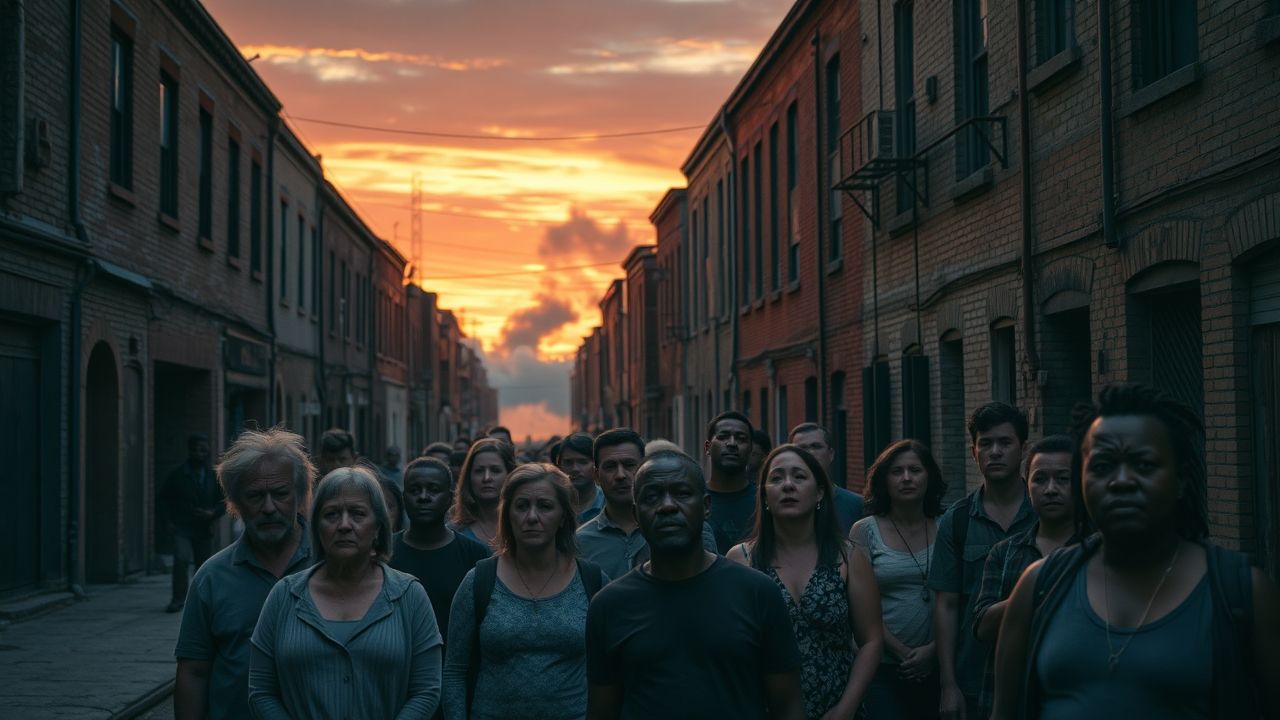The Anatomy of a Riot: A Seasoned Journalist’s Perspective
The word riot often conjures visceral images of chaos and destruction, a spontaneous eruption of disorder. Yet, as a journalist who has covered social unrest for over a decade, I can tell you that a riot is rarely, if ever, truly spontaneous. It is a complex social phenomenon, often the culmination of simmering grievances, systemic inequalities, and specific triggering events. Understanding the anatomy of a riot requires peeling back layers of immediate incidents to reveal deeper societal currents. This article aims to provide that insight, drawing on extensive reporting and analysis to illuminate the intricate dynamics at play.
Key Summary
- A riot is a complex event, typically not spontaneous but rather the culmination of underlying social, economic, or political grievances.
- Understanding riots involves examining both immediate triggers and long-term systemic issues like inequality and injustice.
- Different types of riots exist, from protest-driven unrest to those fueled by economic hardship or specific cultural events.
- Journalistic integrity demands a nuanced approach, moving beyond sensationalism to explore the root causes and human stories.
- Effective de-escalation and long-term prevention strategies rely on addressing the core issues that lead to public unrest.
Why This Story Matters
The echoes of a riot resonate far beyond the immediate damage. They disrupt daily life, erode public trust, and leave lasting scars on communities. Economically, businesses suffer, property is destroyed, and investment can flee. Socially, such events can deepen divisions, harden prejudices, and foster resentment. Politically, they often spark intense debate about governance, policing, and social justice, sometimes leading to reform, but just as often entrenching existing power structures. This is not merely a story of disorder; it is a profound narrative about societal health, power dynamics, and the often-unheard cries for justice and equity. Ignoring the underlying causes of a riot is to invite its recurrence, making its study crucial for any society striving for stability and fairness.
Main Developments & Context
To truly comprehend a riot, one must move beyond the superficial. These events are not monolithic; they vary widely in their immediate causes, participant demographics, and outcomes. Historically, riots have been catalysts for change, expressions of frustration, or unfortunate byproducts of larger social movements. They can be sparked by perceived injustices, economic downturns, police actions, or even celebratory events gone awry.
The Spark and the Tinderbox
While a single event often acts as the catalyst—a controversial arrest, a court verdict, or an economic policy—this “spark” falls upon a “tinderbox” of pre-existing conditions. These conditions often include:
- Socio-economic disparities: High unemployment, poverty, lack of opportunity, and wealth gaps.
- Systemic injustice: Perceived or actual discrimination based on race, religion, or social class.
- Political disenfranchisement: A feeling that one’s voice is not heard, or that political processes are rigged.
- Lack of trust in institutions: Especially law enforcement and government, leading to a breakdown in social contract.
- Grievances: Specific, unresolved complaints that accumulate over time.
It’s the accumulation of these factors that creates the potential for widespread public unrest. The spark merely ignites what has been building beneath the surface, sometimes for decades.
A Historical Lens on Urban Unrest
Looking back, instances of public unrest abound. From the Boston Tea Party to the L.A. Riots of 1992, these events are woven into the fabric of history. They highlight how societies grapple with change, inequality, and power. Some historical examples, like the Stonewall Uprising, while initially violent, are now largely seen as pivotal moments for civil rights movements, underscoring that the legacy of a riot can be complex and sometimes even positive in the long run. Others, like the various bread riots throughout history, highlight the visceral human response to economic desperation. Understanding these patterns helps us contextualize contemporary events and avoid simplistic interpretations.
Expert Analysis / Insider Perspectives
In my 12 years covering this beat, I’ve found that the narrative around a riot is rarely simple, and often distorted by immediate concerns rather than deeper understanding. The media, too, plays a critical role in shaping public perception, often focusing on destruction rather than the complex tapestry of grievances that lead to such events. My approach has always been to seek out the voices of those directly affected, those on the ground, and those whose communities are most impacted.
“The people who participate in these disturbances are not just ‘looters’ or ‘criminals’; they are often individuals at the end of their tether, responding to conditions they feel are unbearable. To dismiss them is to miss the fundamental warning signs society is emitting.” – Dr. Evelyn Reed, Social Historian, in an interview I conducted last year.
Reporting from the heart of the community, I’ve seen firsthand how nuanced the triggers can be, and how quickly misinformation can spread. It’s easy for outsiders to demonize participants or oversimplify motives. However, conversations with community leaders, residents, and even participants reveal a spectrum of motivations, from genuine protest against injustice to opportunistic behavior, all occurring within the same broader event.
Through countless interviews, I’ve learned that trust is paramount. When communities feel consistently unheard or unfairly treated by authorities, the potential for a volatile reaction to a perceived injustice dramatically increases. This breakdown of trust is a critical, often overlooked, precursor to public unrest. It’s not just about what happened, but about what led up to it – the accumulation of slights, the feeling of powerlessness, and the desperation for change.
Common Misconceptions
There are several pervasive myths about a riot that complicate public discourse and hinder effective responses:
- Myth 1: Riots are purely spontaneous and irrational acts.
While the immediate trigger might seem sudden, the underlying conditions that create the environment for a riot build up over time. They are often a desperate, albeit often destructive, form of communication.
- Myth 2: All participants are criminals or agitators.
While criminal elements may exploit the chaos, many participants are ordinary citizens expressing legitimate grievances, or simply caught up in the emotional fervor. Studies show a wide range of backgrounds among those involved.
- Myth 3: Force is the only effective response.
While law enforcement has a role in restoring order, an exclusively forceful approach often exacerbates tensions and can lead to more violence. De-escalation tactics, dialogue, and addressing root causes are crucial for long-term stability.
- Myth 4: Riots achieve nothing.
Though destructive, some riots have undeniably led to significant policy changes, social reforms, and increased public awareness of systemic issues that were previously ignored. They can force uncomfortable but necessary conversations.
The Path Forward: De-escalation and Resolution
Preventing and de-escalating a riot requires a multi-pronged approach that extends beyond law enforcement. It involves robust community engagement, transparent governance, and a proactive commitment to addressing the root causes of discontent. This includes investing in underserved communities, ensuring equitable justice systems, and fostering open lines of communication between citizens and authorities. For a riot to truly end, and for peace to be sustainable, the underlying issues must be resolved, not merely suppressed. This is a long-term societal commitment, not a short-term policing problem.
Frequently Asked Questions
What typically causes a riot?
Riots are typically caused by a combination of long-standing systemic issues like poverty, inequality, and injustice, coupled with a specific triggering event that ignites the pent-up frustrations.
Are all riots violent?
While many riots involve violence and property destruction, some can begin as peaceful protests that escalate due to perceived police overreach, outside agitators, or a breakdown of order. Not all participants engage in violence.
How do authorities usually respond to a riot?
Authorities typically respond with law enforcement deployment to disperse crowds and restore order, often employing tactics like tear gas, rubber bullets, and arrests. However, effective responses increasingly include de-escalation, dialogue, and addressing underlying grievances.
What are the long-term consequences of a riot?
Long-term consequences can include economic decline in affected areas, deepened social divisions, increased mistrust between communities and authorities, but also, in some cases, significant policy reforms and heightened awareness of social injustices.
Can riots be prevented?
While impossible to completely guarantee, riots can be largely prevented by proactively addressing socio-economic inequalities, ensuring fair justice systems, fostering strong community-police relations, and providing avenues for peaceful redress of grievances.



